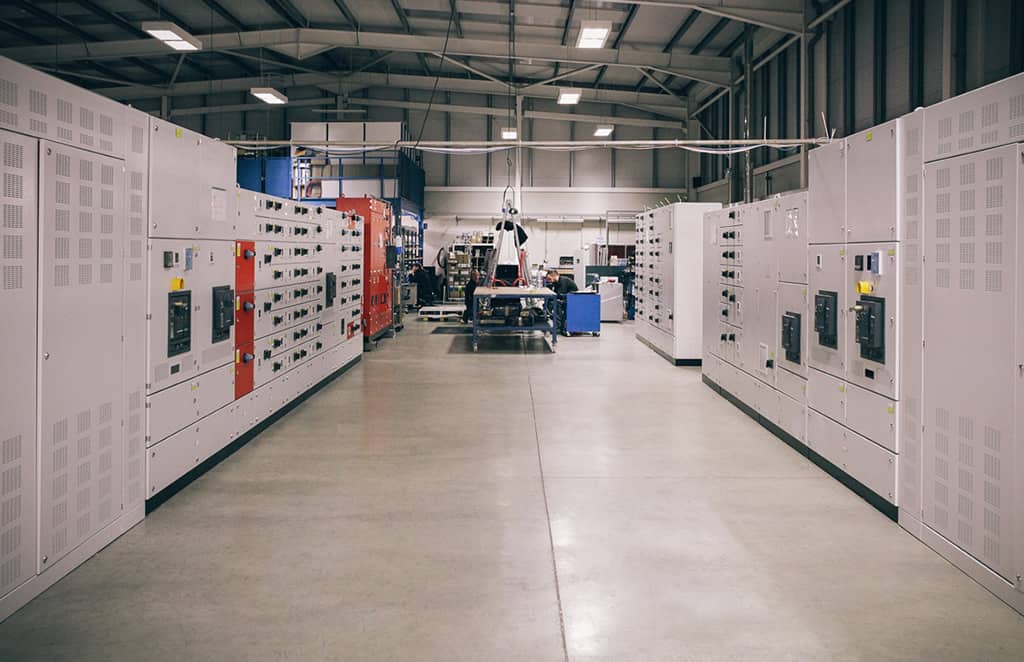When To Retrofit, Refurbish or Replace Ageing Switchgear
Management and maintenance of ageing switchgear is a common issue throughout the UK and European Markets. Older buildings are being upgraded to the 21st Century, or relatively new buildings have additional power demand, meaning existing equipment needs to be optimised to meet the new site electrical requirements.
Capital expenditure, potential power disruption to site and economic uncertainties may often mean that the user will be initially cautious about automatically replacing all equipment. Users will have an extensive evaluation of the safety, performance and possibility of extended live of existing equipment before making a final decision of “Retrofit, Refurbish or Replace”
Retrofit:
This involves replacement of the old circuit breaker, within the existing switchgear system, with a new modern circuit breaker. Typically a retro fit is carried out on an existing switchgear panel which is of good condition and has a considerable time remaining until its end of life.
An example of retro fitting could be upgrading a feeder MCCB circuit from 400A Thermal Magnetic MCCB to 630A with Electronic Trip. This would be done for additional load to the building and also provides better electrical co-ordination between control panels. Care and consideration to the BSEN 61439 standard needs to be taken when doing any retrofits to existing panels.
Other reasons for a retrofit would be worn out and damaged circuit breakers or replacing obsolete protection and/or control relays. Replacing these will mean panels will have better performance and protection.
Straightforward retrofits offers minimal disruption to site and using a “staged” retrofit for multiple circuits allows the user to have greater control of shutdown times and site distributions.
Refurbish:
This option means restoring existing equipment to its original condition and performance specification. This option is “age” driven as there is often limited access to the original manufacturers’ materials and documentation. However, a refurbish can, in instances, enhance the ratings and performance of equipment supplied.
A refurbishment will involve a maintenance sweep of all parts (inspection, cleaning, and lubrication of parts, adjustments and circuit breaker tests) with damaged parts also refurbished or replaced.
The major advantage of this option is the overall cost savings. This is because the refurbishment cost of a panel may be cheaper than the equivalent of replacement panel. Additionally, this option also lends itself well to having minimal down time and able to have a “staged” downtime to various loads while undergoing works. There may also be a saving with regards existing cables and connections, as they may not need to be replaced.
Replace:
After an evaluation of existing equipment, the user may decide to completely replace equipment on site. This involves disconnection of existing cables to switchboard, removing panel from site and inserting a new switchboard in its place. Some factors the user will use to make a decision which ultimately ends up with a “replace” decision are:
- Condition, age and performance of existing equipment
- Safety Performance (such as deteriorated insulation levels, Fire Risks)
- System Fault levels
- Adherence to latest BSEN Standards (Such as BSEN61439)
- Performance history
- Latest site power and control requirement
- Upfront cost and disruption to site (Electrical, Civils and Ground Works)
- Extension required to Project to upgrade
While replacing is often the more expensive option, updating the system is ultimately safer and more durable. Replacing the system also offers a longer life expectancy and warranty, and at the same time allows the user to build in future power capacity; allowing the user to have freely available power supplies added without extensive future works.
Notes:
The choice made is project specific, however careful consideration is required to create a safe and practical output which will affect the electrical performance of entire building.
The TES Group are able to help you with your decision and ask the correct questions when evaluating your existing switchgear onsite. Our UK Switchgear Specialists would be able to advise you on any questions & clarifications regarding the latest BSEN 61439 standards and availability of parts.
TES have been involved heavily in site retrofitting and site upgrades throughout UK and Europe for a range of panel equipment including Transformers, LV Switchgear and Motor Control Centres. Please do not hesitate to contact us with any question or queries you may have.

